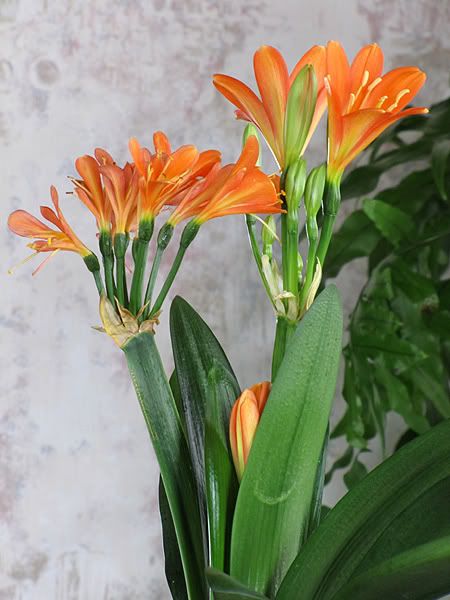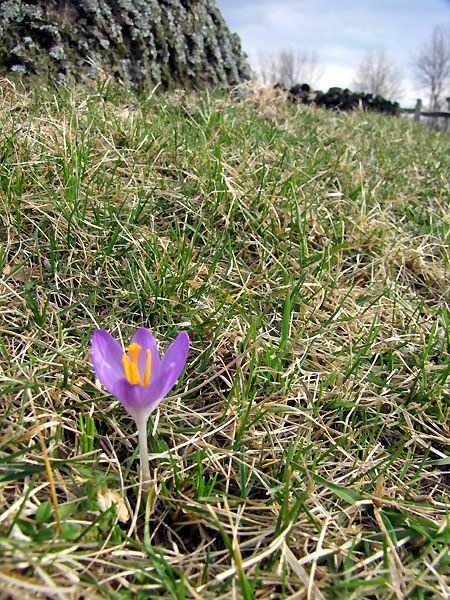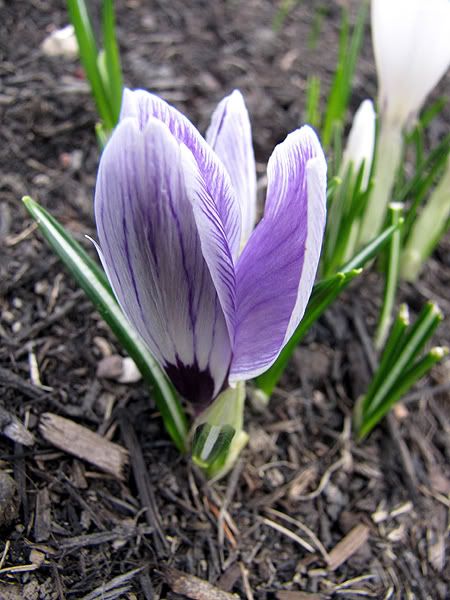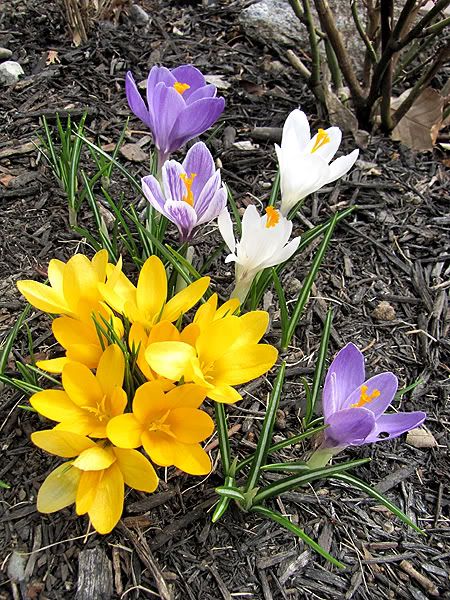 We are a Certified Monarch Waystation. This means that we grow plants that are good host plants for the Monarch caterpillar and good food sources for the Monarch butterfly. Even before I started gardening with a purpose, Our Little Acre was a haven for the Monarchs. We'd see them all the time in our meager flower beds and once saw a flock of them spend the night during migration. But now we're official.
We are a Certified Monarch Waystation. This means that we grow plants that are good host plants for the Monarch caterpillar and good food sources for the Monarch butterfly. Even before I started gardening with a purpose, Our Little Acre was a haven for the Monarchs. We'd see them all the time in our meager flower beds and once saw a flock of them spend the night during migration. But now we're official.
 We're also a Certified Wildlife Habitat. We provide food, water, places for cover, places to raise young, and practice sustainable gardening. This is the National Wildlife Foundation's way of promoting preservation of what has already been here for thousands of years. We can cohabitate with the birds and the bunnies and the frogs and all be happy together. Okay, so the bunnies can be a problem sometimes, but still.
We're also a Certified Wildlife Habitat. We provide food, water, places for cover, places to raise young, and practice sustainable gardening. This is the National Wildlife Foundation's way of promoting preservation of what has already been here for thousands of years. We can cohabitate with the birds and the bunnies and the frogs and all be happy together. Okay, so the bunnies can be a problem sometimes, but still.
 It's no secret, too, that this is the place that furry fuzzballs, otherwise known as cats, seem to magically appear from time to time. We don't really do anything special to promote this, at least not with the intent of attracting them. But eventually, the word gets out in the cat world and one by one they meander into the garage and many times, into our hearts.
It's no secret, too, that this is the place that furry fuzzballs, otherwise known as cats, seem to magically appear from time to time. We don't really do anything special to promote this, at least not with the intent of attracting them. But eventually, the word gets out in the cat world and one by one they meander into the garage and many times, into our hearts.
Just last week, we shared one of our "hang-arounds" with some friends. The most adorable brown tabby to ever roam these parts had been winding her tail around our legs for about two months and a search in the area failed to find an owner. If we hadn't already had nine of our own, she would definitely had been a keeper.


We've found cute little mice nesting in the garden ...

...and there was the snake that spent the winter in our compost bin...
So, with all this nature love floating around here, it should come as no big surprise that we got a wildlife visitor late last night. I'd already gone upstairs to bed when sometime around midnight, Romie came running up the stairs. Romie almost never runs up the stairs, so I knew something was up. He poked his head in the door and asked, "Want to take a picture of a skunk?"
Now I think skunks are cute. They're fluffy and they have an adorable waddle as they move from point A to point B. But they are best admired from a distance. If they feel like it, they can spray their musk quite accurately up to 15 feet away.
My first concern was for any of our cats that might still be outside. Romie informed me that Jack, Boo, and Sunny were still out. Oh dear. I'd just given Luna and Simon water baths earlier in the evening, and I didn't want to try to find enough tomatoes for a skunk bath.
We watched Mr. Skunk from the kitchen window as he scrounged around for sunflower seeds. There are two bird feeders just outside the window and there was plenty of seed on the ground, since the birds tend to be messy with their eating habits.

In order to get a good picture of him in the dark, I needed to use a flash. In order to use the flash, I needed to have the window open so the flash wouldn't glare off the glass. Romie tried to open the window as quietly as he could, but still the window creaked from having been closed all winter. The skunk gave a little startle, but didn't look up. He must have been really hungry.

I snapped a few pictures and the flash didn't bother him either. And then the cats appeared. They merely sat and watched from a distance (although within that 15-foot danger zone) and the skunk paid them no mind. Minutes later, the skunk - his appetite satiated - waddled away and Romie let the cats in.
Whew. Drama averted.

All the stink on skunks:
- Mephitis mephitis
- Peak breeding activity is late February through March
- Gestation period is 63 days
- Litter size of 2-10 offspring
- Adult weighs 2.5 - 11.5 pounds
- Adult length is 22.5 - 31.5 inches
- Typical foods include insects, small mammals, fish, crustaceans, fruits, grasses, leaves, buds, grains, nuts, and carrion.
Description
The striped skunk is about the size of a house cat, with a large deep body, small head, and short legs. The hair is long and black, with a broad patch of white on its head and shoulders. Two white lines forming a “V” from the shoulder area may extend part way or all of the way to the base of the bushy tail. Color variations include brown, white, cream, black, and, occasionally, albino. Males and females are colored alike with males being slightly larger in size.
Each foot has five slightly webbed toes with the forefeet having long, curved claws designed for digging. The rear feet have shorter, straighter claws.
Habitat and Habits
Striped skunks are highly adaptable and occupy a wide variety of habitats in Ohio from rural areas to the suburbs. It is this adaptability which accounts for their numbers growing stronger as civilization and humans encroached.
Although not true hibernators, skunks store quantities of body fat in the fall. When the weather gets cold they will retreat to protective dens where they might remain for several weeks or a month at a time.
Skunks are primarily nocturnal animals and very seldom do they wander around during the daytime. They will occupy dens that they have dug or in dens that have been used previously by groundhogs or foxes. These dens may be located beneath buildings, in open fields, on hillsides, or under logs in the woods. Reproduction and Care of the Young
Skunks mate in Ohio in late February and continue through March. Females are in heat for four to five days and will typically mate several times during this period. Males tend to be a bit promiscuous and will move from den to den mating with females.
Litters tend to be from 2 to 10 young which are born pink-skinned and blind. By the second week they are furred and by the third week their eyes have opened. By the sixth week they are weaned and will be out and about with their mother on nightly hunting forays. This family will stay together until the next spring when the young will go off on their own.
 _____________
_____________
Information about skunks from Ohio Department of Natural Resources.
































































 "Bejeweled"
"Bejeweled"

